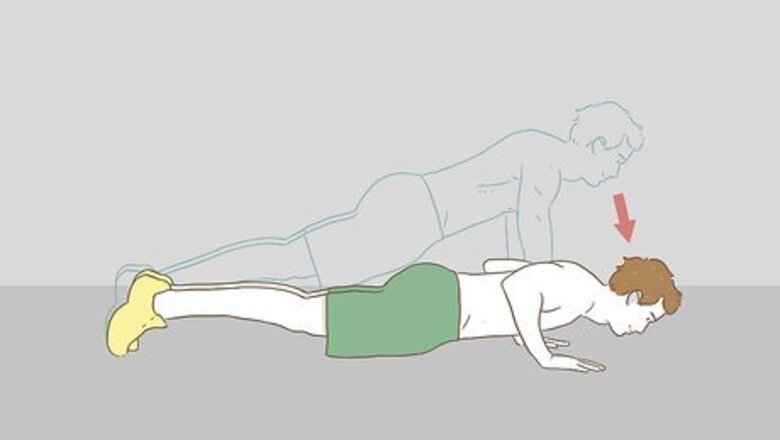
views
Doing Pushups
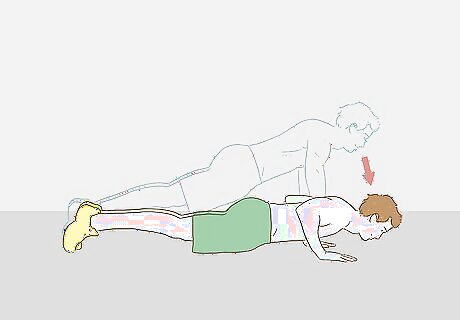
Perform basic pushups. There are many variations of pushups that can help you build your chest muscles, but for beginners, there's nothing wrong with basic, ordinary pushups. That said, when starting push ups, avoid lowering your chest too close to the ground. Lowering yourself too close to the floor can tear tissues in the shoulder. Gradually work your way to lowering yourself slightly closer to the floor over time. Lie face down with your hands on the floor directly under their respective shoulders. Straighten your back so that your feet and your shoulders create a straight, rigid line. One repetition consists of bending your arms down to a 90 degree angle and straightening them out again. Raise and lower your body in a slow, steady motion. Do as many of these as you can! If you are an absolute beginner, you may need to start out doing pushups with your knees on the floor, but your hips and back straight.
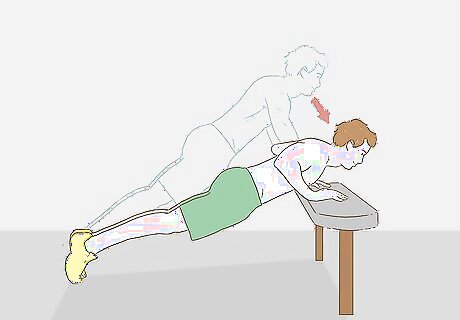
Perform incline pushups. These are similar to basic pushups, but your body is elevated by a piece of furniture such as a bench, chair, or desk that you rest your hands against. Lie face down with you hands on the bench. Position your hands slightly wider than shoulder-width apart, and your feet about hip-width apart, with your toes on the floor. Keep your back and legs as straight as you can. Then, slowly and steadily lower your body so that your chest is just a few inches from the bench. Return to the starting position by straightening your arms, and repeat. Incline pushups are an easy variation, making them great for beginners.
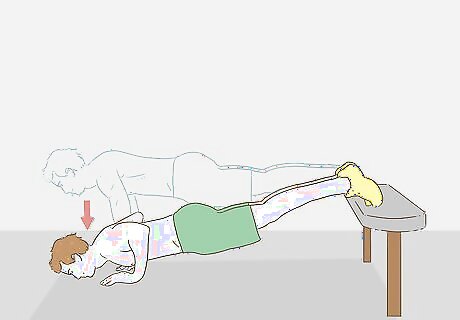
Perform elevated pushups. Find a sturdy chair or bench that won't slide across the ground and is able to hold your weight. Then, get into the basic pushup position, but place your feet on the chair rather than on the ground. Straighten your back so that your feet and your body creates a horizontal line parallel with the floor. Place the chair up against the wall for extra stability. One repetition consists of bending your arms down to a 90 degree angle and straightening them out again.
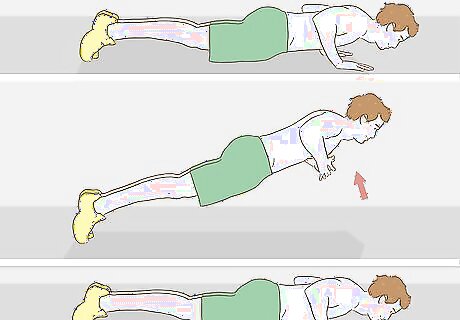
Perform gorilla pushups. To perform gorilla pushups, start as if you were doing basic pushups, with your body in the down position. Then, rapidly push up, launching yourself off the ground. Slap your chest or clap, then rapidly return your hands to the starting position. Gorilla pushups are a more advanced pushup variation. Don't try these until you can comfortably do lots of basic pushups.
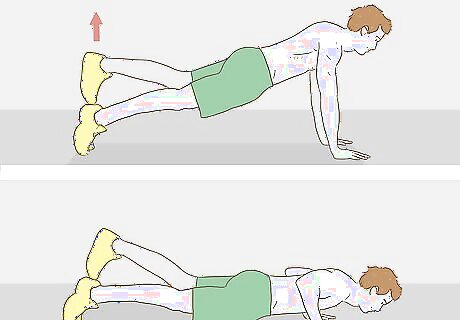
Perform single-leg pushups. Start in the basic pushup position, with your feet spread to shoulder width or wider. Lift one foot so that it is hovering off of the ground and then complete each repetition just as you would with a basic pushup. After doing a few repetitions, switch legs. For example, try to do five single-leg pushups with your left leg raised, then do another five with the right raised. Keep your glutes tight while doing these. If you want to, you can exercise your legs at the same time by moving the knee of the raised leg toward your elbow as you push up, and switching legs with each repetition. Some people call these, "reptile" or "lizard" pushups. The wider apart your feet are, the harder the push up will be, because it will shift more of your weight to one arm. Single-leg pushups are among the most challenging variations. You will probably need to work up to these.
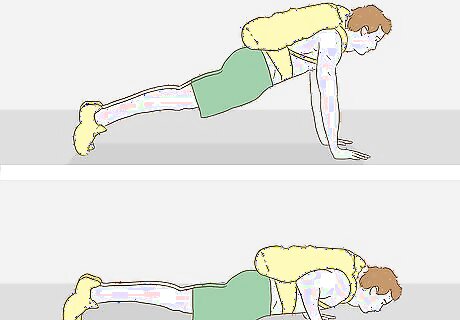
Perform backpack pushups. If normal pushups and pushup variations begin to grow too easy, you can increase the weight and stress of the pushups to keep your workout rigorous. One easy way to do that is to perform any of the above pushup variations while wearing a backpack. You can steadily increase the weight as your muscles develop by placing heavier objects in the backpack.
Doing Dips
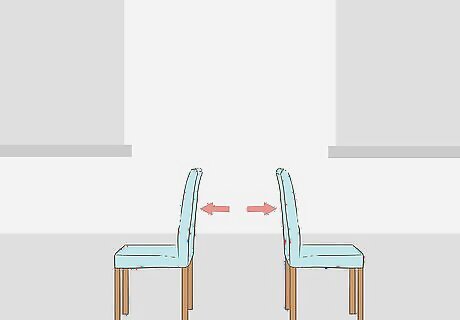
Find something to support your body. Dips are most easily performed on parallel bars in a gym. However, you can improvise using a very sturdy chair. Stairs or the edge of a bathtub may also work. Make sure the chair is sturdy and stable. If it breaks or moves while doing this exercise, you may be injured. Do not attempt this on hardwood floors or other smooth surfaces that might allow the chair to slide easily.
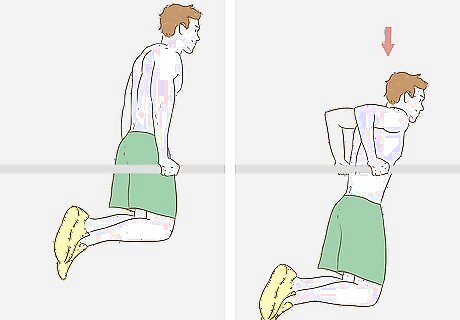
Start doing dips. Sit on the edge of your chair or other support. Place the heel of your palm on either side of your seat, with the fingers curved over the edge. Lower yourself until your arms are at a 90 degree angle, then raise yourself up until your arms are straight again. Dips are a great way to work out the inner chest muscles, which are often under-exercised with pushups. For beginners, you can actually do dips with your hands on the seat and your legs stretched out in front of you and the backs of your heels touching the floor. When beginning dips, be careful with how far you lower yourself. Slowly increase your range until you can lower your torso to a 90-degree bend in the elbow. The elbow should never bend more than 90 degrees, or else a shoulder injury can occur.
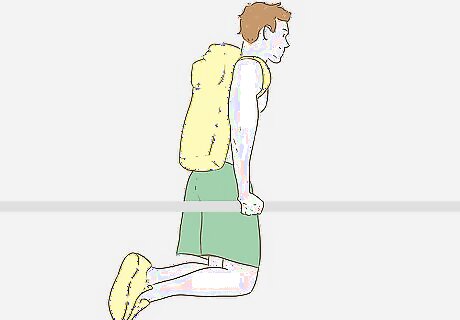
Perform backpack dips. When normal dips become too easy, you will need to increase the weight and stress of the dips. Wearing a backpack is a simple and easy way to do that, and you'll be able to gradually add weight to the backpack to suit your workout needs.
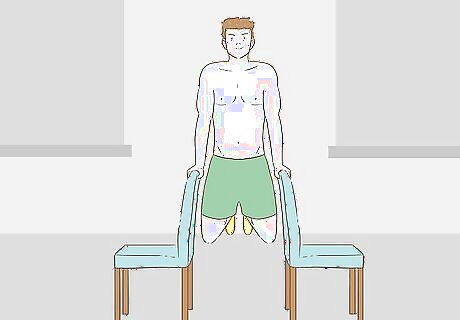
Change the position of your feet. You can increase the difficulty of dips by changing the position of your feet. One way to do this is to elevate the feet by placing them on a chair. You can also lift one leg off the ground while doing the dips.
Doing Stretching Exercises
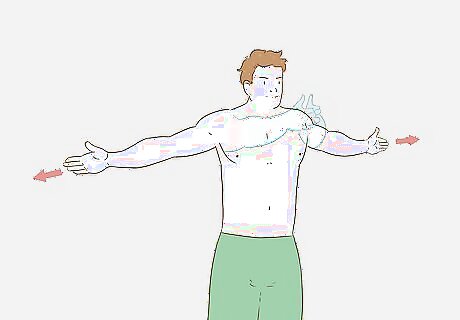
Do chest stretches. Stand with your arms extended in front of you and your palms together. Then, keeping your elbows straight, quickly move your arms back as far as possible and then back in again to the starting position. Do ten of these, and increase your speed with each repetition. This exercise also works your back.
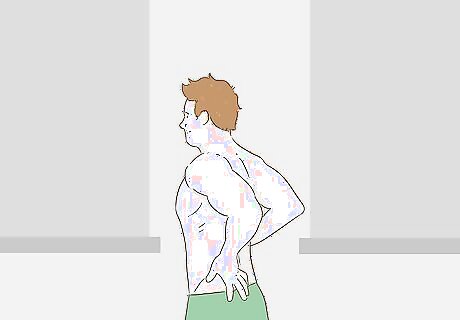
Do elbows-back repetitions. Stand up straight, placing both hands on your lower back. Point your fingers downward and elbows out. Then, gently move your elbows back and inward as far as you can, as if to touch them together. Then, return to the starting position, and repeat. This exercise also works your shoulders.
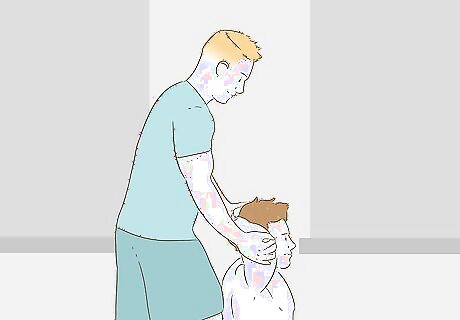
Do behind-the-head stretches. Sit upright on the floor with a partner standing behind you. Put your hands behind your head, and push your elbows back as far as you are able to. Then, have your partner hold your elbows while you gently attempt to pull your elbows forward, keeping your hands in place. Each repetition of this should be about 10 seconds. Your partner should not allow your elbows to move while you are pulling them forward. After each repetition, relax, and have your partner pull your elbows back as far as is comfortable to stretch the chest muscles. To avoid injury, be sure to let your partner know when to stop pulling. This exercise also works the shoulders.




















Comments
0 comment